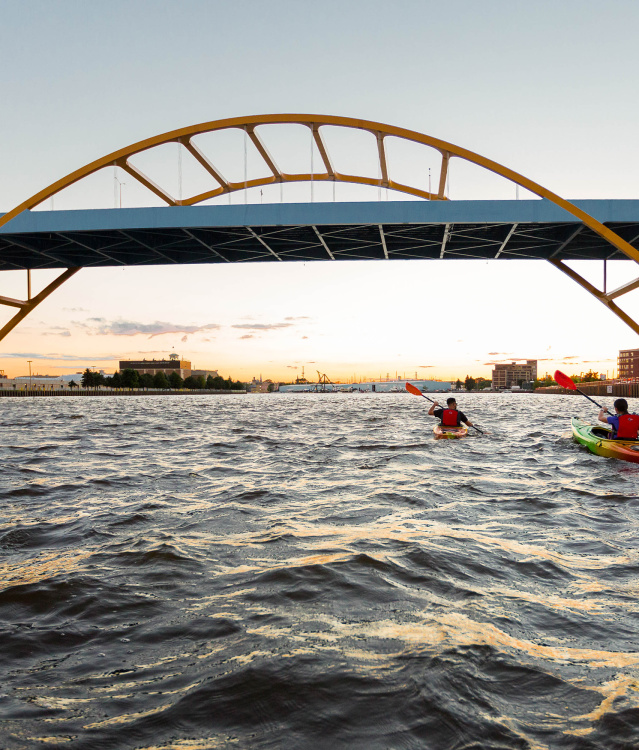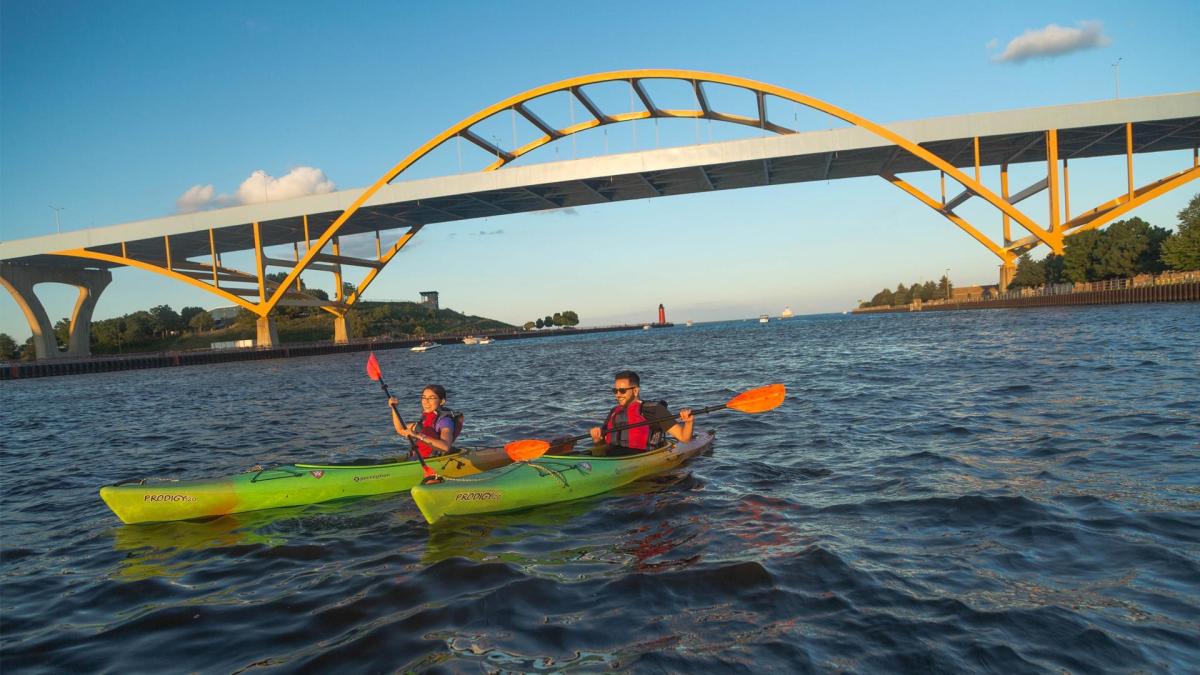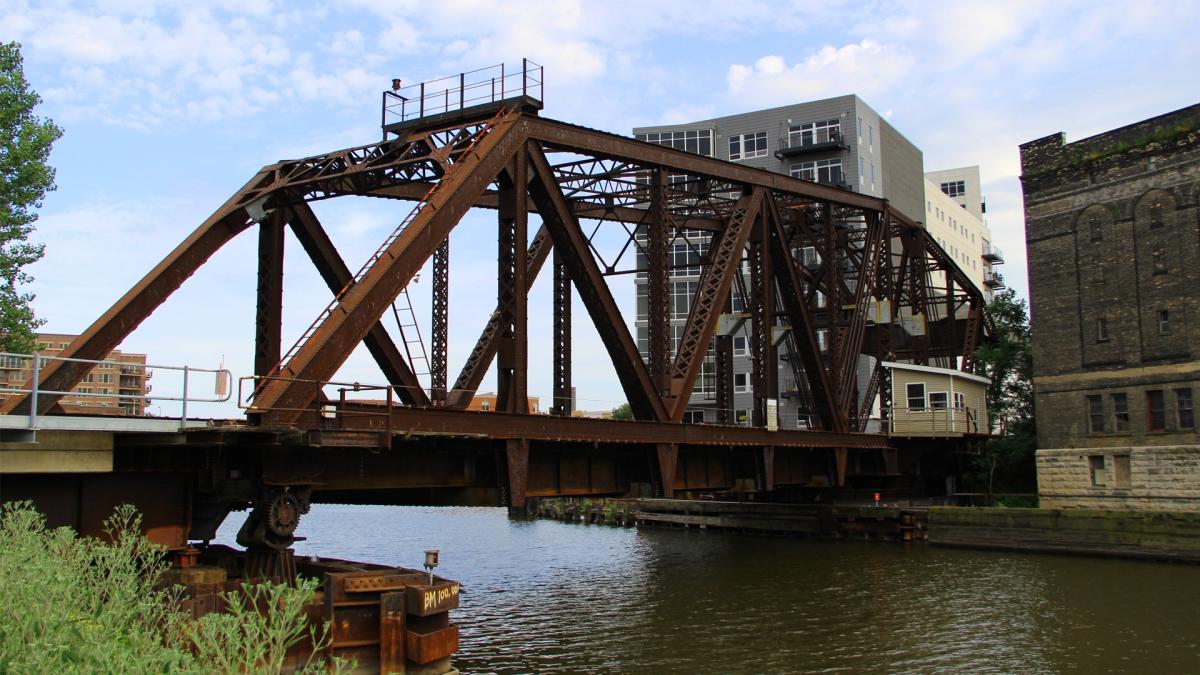Milwaukee Bridges
Did you know that there are 16 bridges along the Milwaukee River from the northernmost point of the RiverWalk — the Humboldt Street Bridge — to the southern end — the Milwaukee Street Bridge in the Historic Third Ward? Stroll the RiverWalk, enjoy an excursion boat cruise, or paddle the river by kayak or canoe to see them all.
Types Of Bridges Downtown On The Milwaukee River
- Standard fixed bridge
- Bascule bridge (drawbridge): The most common type of movable bridge which opens quickly and requires little energy to operate.
- Vertical lift bridge: Rises vertically and remains parallel with the deck.
Bridge Operation
The movable bridges are operated by a combination of bridge workers, who man the bridge houses at each bridge, and off-site operation using remote control cameras and switches. The bridges have different hours of operation and follow procedures set by the Department of Public Works, including regular opening times and advance call-in guidelines.
Reflecting the time period in which the bridges were built - Neoclassical, Art Deco and Modern - the bridge houses contain the electrical controls and are characterized by a tower-like profile which provides superior overview of passing vessels.
Hoan Bridge
Completed in 1977, the Daniel Hoan Memorial Bridge is a tied-arch bridge that connects downtown Milwaukee to the Bay View neighborhood on the opposite side of the harbor. Known to locals simply as "the Hoan," the bridge is not only a local icon, but also a movie star: while under construction, the Hoan appeared as the site of the iconic car chase scene in the movie Blues Brothers.
Historic Menomonee River Railroad Bridge
From the Water Street Bridge in the Historic Third Ward, one can view one of three nationally significant and rare “bobtail swing” bridges in the country. Built in 1904, the Menomonee River Railroad Bridge is still in use today. In its closed position, the bridge allows both passenger and freight railroad traffic to cross the Menomonee River from the Milwaukee Intermodal Station. When a vessel needs to pass under the bridge, motors rotate the bridge from a center point approximately 90 degrees horizontally. This provides clearance for vessels of any height, but restricts the width of the waterway through which the vessel can pass.
More on Milwaukee's Growth & Development
Like a vibrant ribbon, the Milwaukee River, with its sidewalk cafes, shops, public art, green spaces, and special events, has defined development in downtown Milwaukee.






